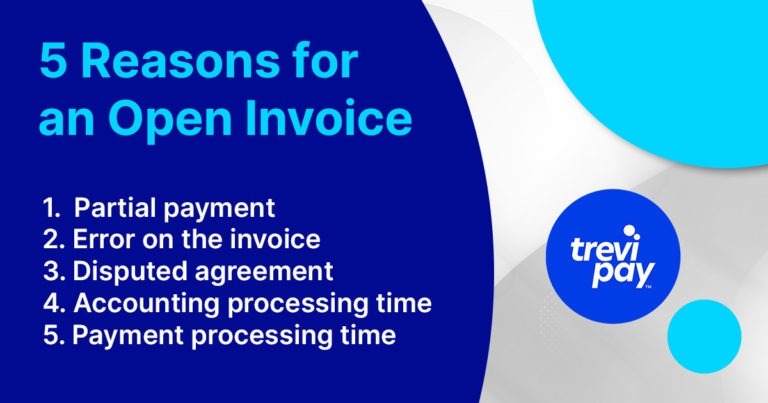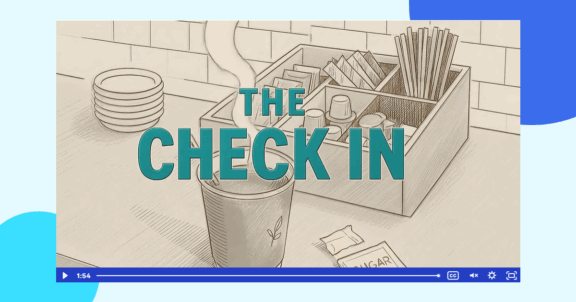‘Open invoices‘ and ‘closed invoices‘ invoices are terms often used in business and accounting.
But what are they exactly? Why are they important? And what types of open invoices are there?
There are many factors that influence the status of invoices. Let us explain the points of difference and how you might influence them.
Open Invoice Definition
An open invoice (also known as an outstanding invoice) is simply an invoice that has been issued by the seller/vendor but not yet paid (or paid fully) by the buyer/client.
An invoice is considered a closed invoice once it has been fully processed and paid.
Payment of invoices can remain open for a number of reasons, some good and some bad. We will discuss some of these further below.
But first, let’s look a bit closer at invoices.
What are invoices?
At its most basic level, an invoice (sometimes known as a bill or tab) is a document detailing the costs and payment terms of services or products sold.
It is sent by the seller/service/provider to the buyer/service user and lists both parties’ information. It also stipulates when and where the payment is due. These are the terms of payment.
The word ‘invoice’ itself originally comes from the mid-sixteenth century. ‘Invoy’, which came from the French word ‘envoyer’, which was used to mean ‘to send’.
In modern English, an invoice is technically a ‘sales invoice‘ to the seller and a ‘buyer’s invoice‘ to the buyer.
Why invoices matter
Invoices not only detail purchases and make transactions run smoothly but also provide details used to pay taxes or settle commercial disputes.
Monitoring your invoices is a large part of your (or your accounting department’s) accounts receivable work.
A badly organized invoicing process will negatively affect your cash flow and leave you prone to missing outstanding invoices.
How you issue invoices is also important.
For example, sending consolidated invoices can help you make life easier for the accounting department of your customers. This can ultimately foster customer loyalty and punctual payments.
Improve the invoice processing process with automation
Invoice processing involves multiple steps, including approval processes, payments, dunning (sending reminders on open invoices), and credit note invoices (notes that signify changes made to invoice values).
You can save yourself (or your accounts payable department) a lot of work by automating many of these steps. To further optimize your invoice processing methods and reduce the likelihood of open invoices, explore our guide on how invoice processing works.
5 reasons for an open invoice
There are many reasons why companies may have open invoices. Below are five of the most common ones.

1. Partial payment
Partial payments of invoices might occur by design or by accident.
For example, many companies work on projects where they don’t request a single payment for a service or order.
Instead, they ask for part of the payment in advance and the remainder on completion of the project.
This kind of transaction can occur for a number of reasons. It’s particularly valuable when a company’s services take place over an extended period – both businesses will then be aware that the incentive is removed if all payment precedes completion of the work.
It could also be because the final total value of the project might be difficult to estimate at the early stage of cooperation, or the precise services to be provided later on are dependent on early performance.
2. Error on the invoice
There could be a problem with some information on your invoice, such as the invoice number, line items, bank details, even the date listed, etc.
In most cases, your client’s accounts department will simply notify you of the error, which you can then correct and return.
In many cases, this will cause a delay in the payments being sent.
3. Disputed agreement
In other situations, an open invoice might occur because the customer is dissatisfied with services rendered or even disputes that the business agreement was kept.
In this scenario, an accounting department may have been instructed only to pay the total amount. Or perhaps there has been a miscommunication between the businesses and a discount on the final balance was promised by a salesperson.
In some situations, the supplier may already expect and agree on what is owed on the bill. In others, they may need to take steps toward a dispute.
4. Accounting department processing time
Each company is different. The accounts department of the business you are working with might take longer to process and transfer funds than others.
This can leave you with an open invoice for longer than you expected. As the vendor, the only real way to deal with this is to contact your customer and track your invoice.
Dunning, or auto-dunning, is one method of tracking accounts payable. You can also request the customer notify you when your open invoice becomes a closed invoice.
5. Payment processing time
Unlike directly paying with cash, delivery of payments for purchases electronically takes time.
How long each payment takes depends on the payment processing provider and the amount that is being paid.
In the majority of cases, bank transfers are instant.
However, banks can delay some transactions, especially if they are for a significant or relatively unusual amount for that company. This is simply part of banks’ due diligence and no reason for alarm.
The time it takes to process a payment will also increase if it is an international payment.
Conclusion
Open invoices are more common than you may think.
Invoices themselves are technically always either open invoices or closed invoices. You can even intentionally assign an open invoice to a customer’s account to provide flexibility with payments and gain an edge over your competition.
However, in practical terms, open invoices are usually the result of an issue with the payment process or a partial payment agreement.
They can come about for a variety of reasons, including errors, disputes, or payment processing issues.
Improving your invoice processing best practices is one way to decrease the likelihood of unwanted open invoices, and so too is automation.
By mastering control of your open invoices, you can improve your business’s cash flow. In the long run, this underpins the success and growth of your business.






